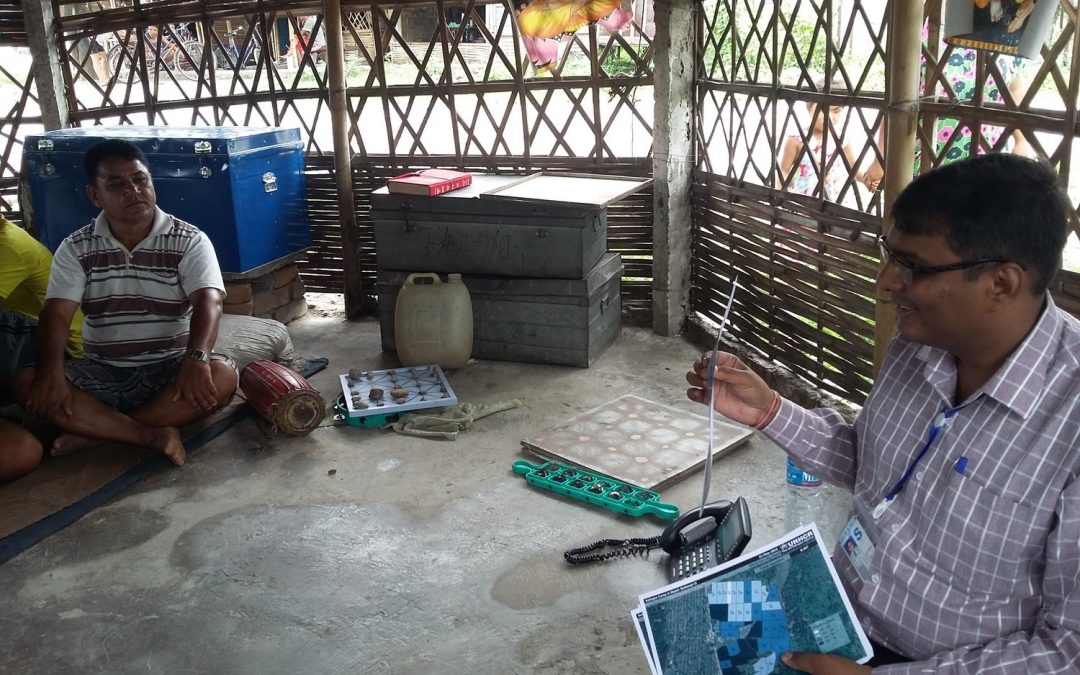During the 1990s, about 108,000 refugees fled ethnic tensions in Bhutan and stayed in the refugee camps in eastern Nepal. For more than two decades they lived in seven camps managed by UNHCR until the third country resettlement program was initiated in 2007. This November UNHCR commemorated the 100,000th departure and the resettlement process is soon coming to an end.
Among those who have stayed behind are mostly elderly people for whom the prospect of moving abroad to third countries like the United States, Canada, and Australia seemed too daunting, or who lacked social support to start a brand new life. They’ve seen their friends and relatives leave one after the other, and now have so less people from the community to talk in increasingly empty camps.
Getting in touch with their relatives abroad isn’t easy. Making phone calls is expensive, and using Internet to chat on Skype involves asking younger refugees for support, as technology often feels too complicated to use. Communication ranks high among priorities voiced by elderly refugees, yet their need for human contact is hardly being met.
Enter Pintu Agrawal, an Assistant Operations Data Management Officer working out of UNHCR’s offices in Damak, Nepal. A firm believer that Internet should be available to all, he’s been thinking for quite some time about how to increase connectivity in Nepal’s camps.
“Mark Zuckerberg and I want to do the same thing,” he says of the Facebook founder’s internet.org project. “Internet connectivity is a global problem.”
However Agrawal is starting out on a slightly smaller scale. His interest in elderly refugees was sparked after hearing about their communication needs, and he started conducting informal focus groups with refugees and staff to try to come up with a solution. Refugees wanted a system that was easy to use, and would allow them to see their relatives on a video screen. Agrawal thought of a device similar to the Cisco phone, only with an Internet connection to enable calls via Skype. “We thought it would be a great idea, because they were comfortable using those old analog phones, but not smartphones,” he recalls.
But giving a device to each refugee would be too costly, and required to install an Internet connection in each household. Agrawal thought it would be more convenient to set up a centralized communication center where refugees could go when they feel like chatting. Having a centralized location meant the equipment could be scaled up; instead of a small Cisco-like device, he would use a smart television connected to a simple remote with Skype contacts memorized on speed dial. This way, users could be just one click away from getting in touch with their families.
The communication center could eventually be used for other purposes and by all refugees, for instance to watch television or use the wi-fi. But for now, Agrawal’s eyes are set on getting a functional prototype working, which involves tackling major challenges such as bringing a reliable Internet connection to the communication center.
Agrawal is currently working with UNHCR Innovation to refine his concept – he was selected as an Innovation Fellow this year – and knows his project might change drastically based on feedback received during tests. That’s why he prefers using the word “testing” rather than “doing” when talking about his project. “Initially when things were changing, I was a bit scared. But I now realize that changes are good,” he says. “I never thought this process could be so easy thanks to the discussion, the brainstorming and the building of ideas.”
One important aspect of the innovation process, according to him, has been to allow refugees and staff to take ownership of the idea by including them early on in the discussions.
The project would have never come to life without the support of UNHCR Innovation, he says, because the Fellowship gave him the opportunity to learn the tools and methods to develop his idea – before the Fellowship, he didn’t even know what a prototype was. “Before 2015 the concept was just an idea in my head, but now I have the opportunity to implement it,” he says. “UNHCR Innovation gave me the support, they gave me the confidence, and they even came forward to seek the support from the internal office.”
Agrawal says his enthusiasm for innovation has now spilled to the rest of his team in Damak. His supervisor and colleagues were always open to new ideas, but didn’t always know what to make of them. Now, his training has given them confidence to experiment, even if this means failing once in a while.
“I think management is changing,” he says. “I can see the two systems working in parallel, the innovation system and the regular way of doing things. And I’m in the middle, looking at the two windows of UNHCR.”

